
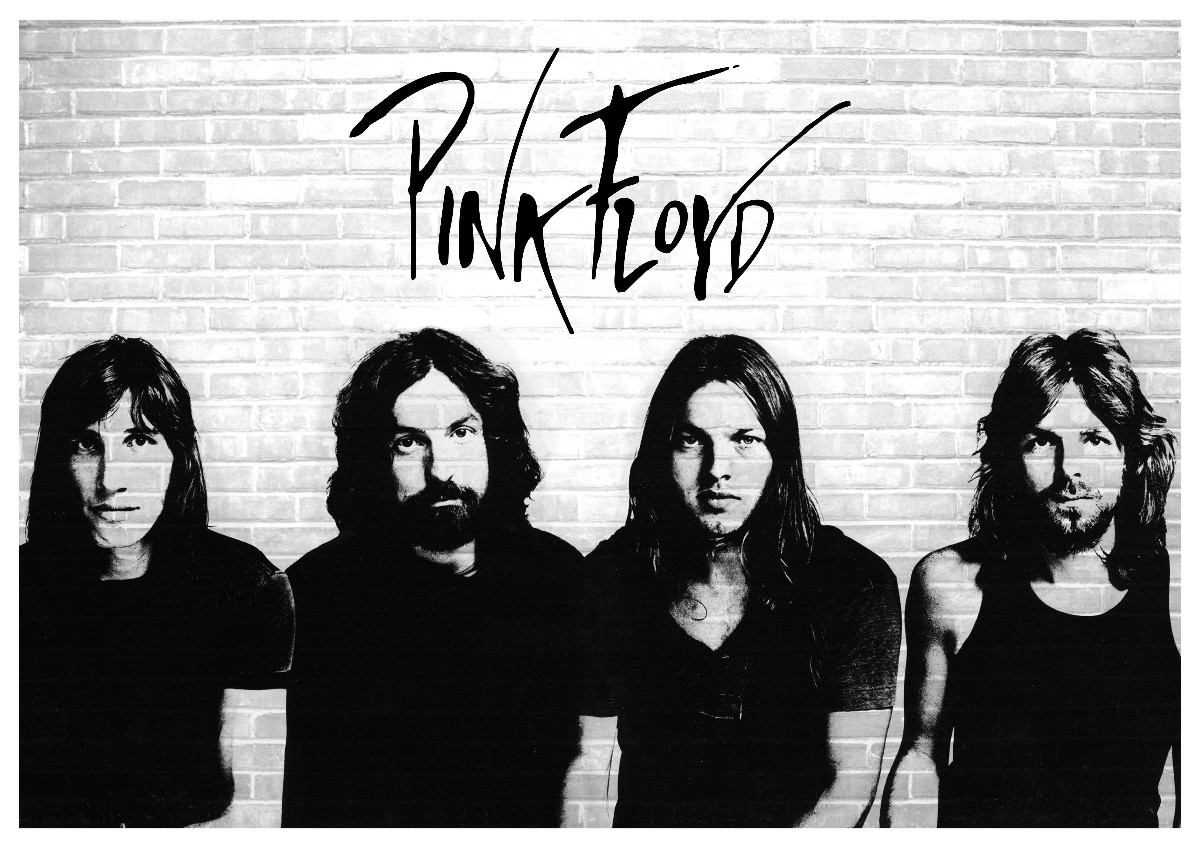
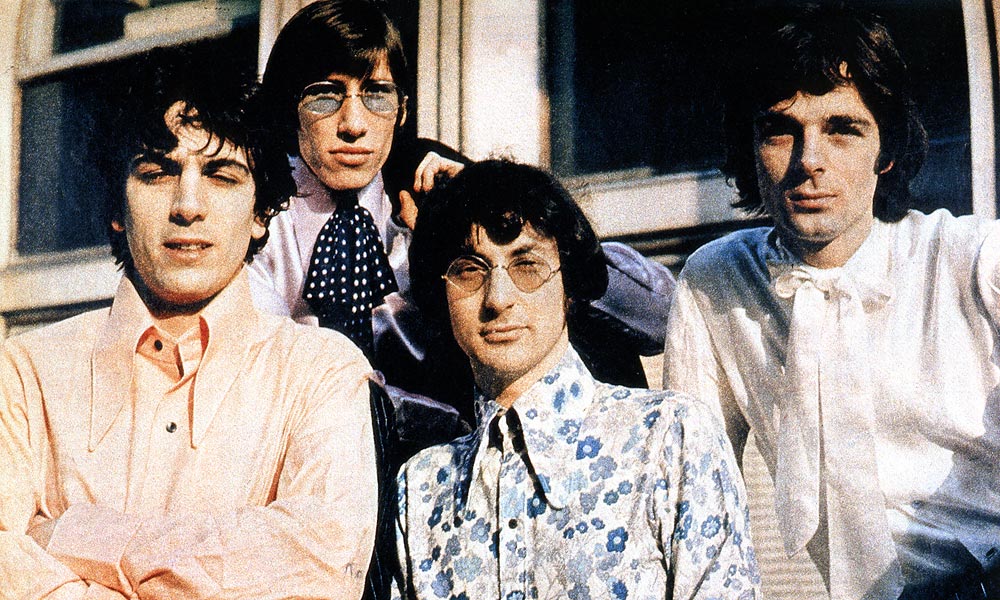
Pink Floyd were an English Rock band formed in London in 1964. Gaining an early following as one of the first British psychedelic groups, they were distinguished for their extended compositions, sonic experimentation, philosophical lyrics and elaborate live shows. They became a leading band of the Progressive rock genre, cited by some as the greatest progressive rock band of all time.
Pink Floyd were founded in 1964 by Syd Barrett (guitar, lead vocals), Nick Mason (drums), Roger Waters (bass guitar, vocals), Richard Wright (keyboards, vocals) and Bob Klose (guitars); Bob Klose quit in 1965. Under Syd Barrett's leadership, they released two charting singles and the successful debut album The Piper at the Gates of Dawn (1967). Guitarist and vocalist David Gilmour joined in December 1967; Syd Barrett left in April 1968 due to deteriorating mental health.
Roger Waters became the primary lyricist and thematic leader, devising the concepts behind the band's peak success with the albums The Dark Side of the Moon (1973), Wish You Were Here (1975), Animals (1977) and The Wall (1979). The musical film based on The Wall, Pink Floyd - The Wall (1982), won two BAFTA Awards. (Best original song, Another Brick in the Wall, and best sound.)
Following personal tensions, Richard Wright left Pink Floyd in 1979, followed by Roger Waters in 1985. David Gilmour and Nick Mason continued as Pink Floyd, rejoined later by Richard Wright. They produced two more albums, A Momentary Lapse of Reason (1987) and The Division Bell (1994)-and toured in support of both albums before entering a long period of inactivity. In 2005, all but Syd Barrett reunited for a one-off performance at the global awareness event Live 8. Syd Barrett died in 2006, and Richard Wright in 2008. The last Pink Floyd studio album, The Endless River (2014), was based on unreleased material from the Division Bell recording sessions.
By 2013, Pink Floyd had sold more than 250 million records worldwide, making them one of the best-selling music artists of all time. Wish You Were Here, The Dark Side of the Moon, and The Wall are among the best-selling albums of all time, and the latter two have been inducted into the Grammy Hall of Fame. Four of the band's albums topped the US Billboard 200, and five of their albums topped the UK Album Chart. Hit singles include "See Emily Play" (1967), "Money" (1973), "Another Brick in the Wall, Part 2" (1979), "Not Now John" (1983), "On the Turning Away" (1987) and "High Hopes" (1994). The band also composed several film scores. They were inducted into the US Rock and Roll Hall of Fame in 1996 and the UK Music Hall of Fame in 2005. In 2008, King Carl XVI Gustaf of Sweden presented Pink Floyd with the Polar Music Prize for their contribution to modern music.
Early years (1963-1967) Formation
Roger Waters and Nick Mason met while studying architecture at the London Polytechnic at Regent Street. They first played music together in a group formed by fellow students Keith Noble and Clive Metcalfe, with Keith Noble's sister Sheilagh. Richard Wright, a fellow architecture student, joined later that year, and the group became a sextet, named Sigma 6. Roger Waters played lead guitar, Nick Mason drums, and Richard Wright rhythm guitar (since there was rarely an available keyboard).
The band performed at private functions and rehearsed in a tearoom in the basement of the Regent Street Polytechnic. They performed songs by The Searchers and material written by their manager and songwriter, fellow student Ken Chapman.
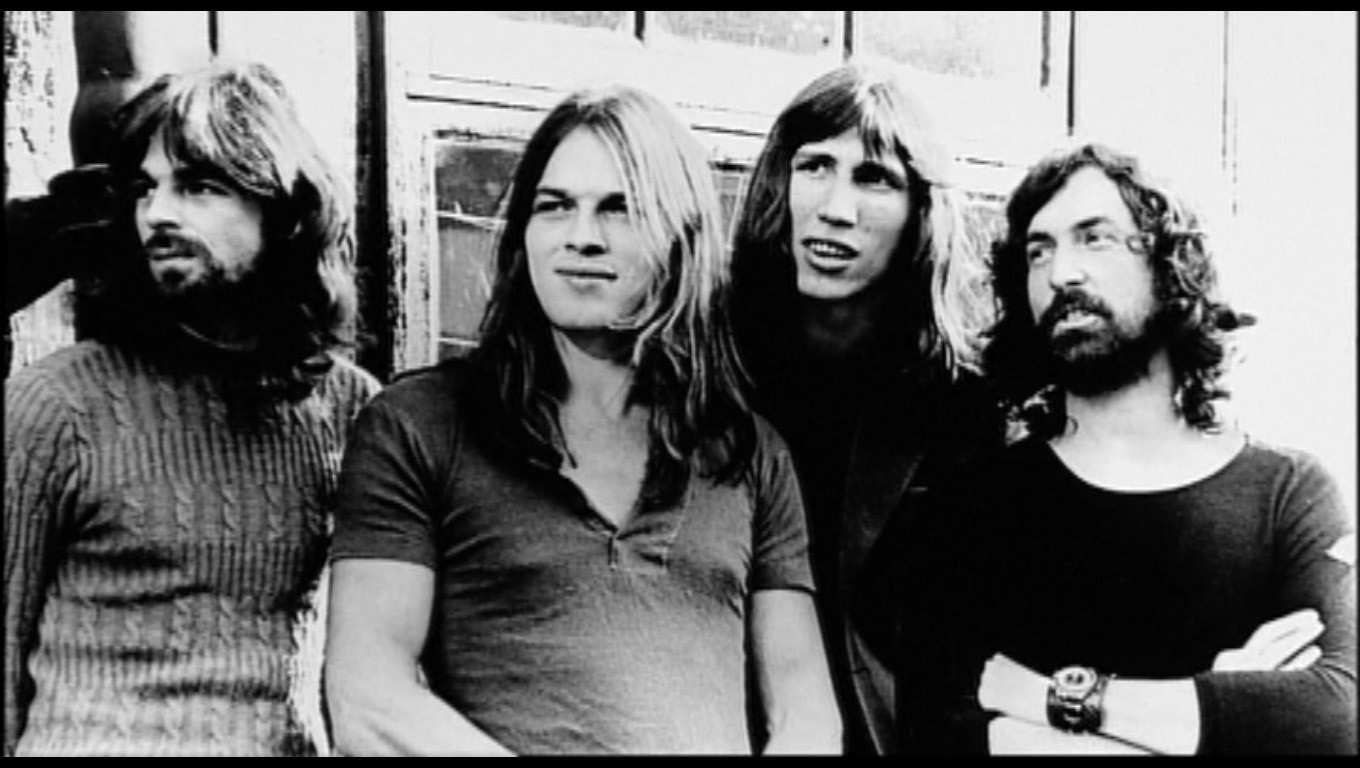
In September 1963, Roger Waters and Nick Mason moved into a apartment at 39 Stanhope Gardens near Crouch End in London, owned by Mike Leonard, a part-time tutor at the nearby Hornsey College of Art and the Regent Street Polytechnic. Nick Mason moved out after the 1964 academic year, and guitarist Bob Klose moved in during September 1964, prompting Roger Waters' switch to bass. Sigma 6 went through several names, including The Meggadeaths, The Abdabs and The Screaming Abdabs, Leonard's Lodgers, and The Spectrum Five, before settling on The Tea Set. In 1964, as Clive Metcalfe and Keith Noble left to form their own band, guitarist Syd Barrett joined Bob Klose and Roger Waters at Stanhope Gardens. Syd Barrett, two years younger, had moved to London in 1962 to study at the Camberwell College of Arts. Roger Waters and Syd Barrett were childhood friends; Roger Waters had often visited Syd Barrett and watched him play guitar at Syd Barrett's mother's house. Nick Mason said about Syd Barrett: "In a period when everyone was being cool in a very adolescent, self-conscious way, Syd was unfashionably outgoing; my enduring memory of our first encounter is the fact that he bothered to come up and introduce himself to me."
Keith Noble and Clive Metcalfe left the Tea Set in late 1963, and Bob Klose introduced the band to singer Chris Dennis, a technician with the Royal Air Force (RAF). In December 1964, they secured their first recording time, at a studio in West Hampstead, through one of Richard Wright's friends, who let them use some down time free. Richard Wright, who was taking a break from his studies, did not participate in the session. When the RAF assigned Chris Dennis a post in Bahrain in early 1965, Syd Barrett became the band's frontman. Later that year, they became the resident band at the Countdown Club near Kensington High Street in London, where from late night until early morning they played three sets of 90 minutes each. During this period, spurred by the group's need to extend their sets to minimise song repetition, the band realised that "songs could be extended with lengthy solos", wrote Nick Mason. After pressure from his parents and advice from his college tutors, Bob Klose quit the band in mid-1965 and Syd Barrett took over lead guitar. The group first referred to themselves as the Pink Floyd Sound in late 1965. Syd Barrett created the name on the spur of the moment when he discovered that another band, also called The Tea Set, were to perform at one of their gigs. The name is derived from the given names of two Blues musicians whose Piedmont blues records Syd Barrett had in his collection, Pink Anderson and Floyd Council.
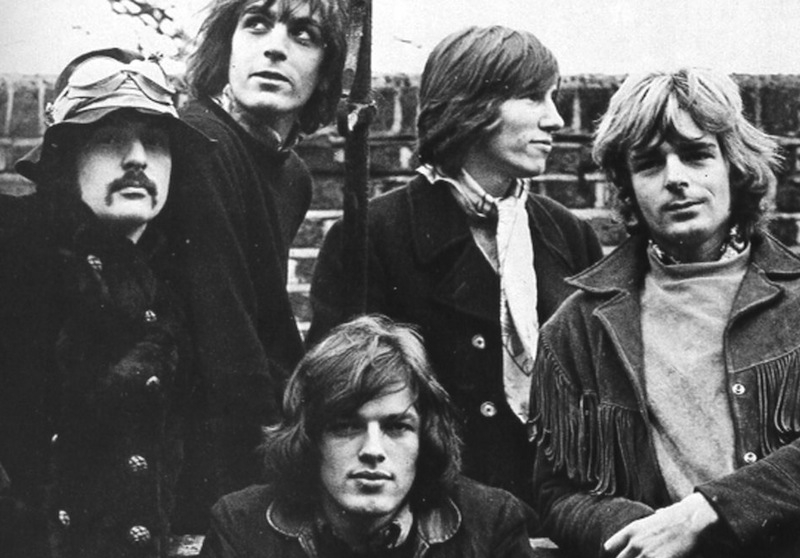
By 1966, the group's repertoire consisted mainly of Rhythm and blues songs and they had begun to receive paid bookings, including a performance at the Marquee Club in December 1966, where Peter Jenner, a lecturer at the London School of Economics, noticed them. Pete Jenner was impressed by the sonic effects Syd Barrett and Richard Wright created, and with his business partner and friend Andrew King became their manager. The pair had little experience in the music industry and used Andrew King's inheritance to set up Blackhill Enterprises, purchasing about £1,000 (equivalent to £19,000 in 2020) worth of new instruments and equipment for the band. It was around this time that Pete Jenner suggested they drop the "Sound" part of their band name, thus becoming Pink Floyd.
Under Pete Jenner and Andrew King's guidance, the group became part of London's underground music scene, playing at venues including All Saints Hall and the Marquee Club. While performing at the Countdown Club, the band had experimented with long instrumental excursions, and they began to expand them with rudimentary but effective light shows, projected by coloured slides and domestic lights. Peter Jenner and Andrew King's social connections helped gain the band prominent coverage in the Financial Times and an article in the Sunday Times which stated:
"At the launching of the new magazine IT the other night a pop group called the Pink Floyd played throbbing music while a series of bizarre coloured shapes flashed on a huge screen behind them ... apparently very psychedelic."
In 1966, the band strengthened their business relationship with Blackhill Enterprises, becoming equal partners with Peter Jenner and Andrew King and the band members each holding a one-sixth share. By late 1966, their set included fewer R&B standards and more Syd Barrett originals, many of which would be included on their first album. While they had significantly increased the frequency of their performances, the band were still not widely accepted. Following a performance at a Catholic youth club, the owner refused to pay them, claiming that their performance was not music. When their management filed suit in a small claims court against the owner of the youth organisation, a local magistrate upheld the owner's decision. The band was much better received at the UFO Club in London, where they began to build a fan base. Syd Barrett's performances were enthusiastic, "leaping around ... madness ... improvisation ... [inspired] to get past his limitations and into areas that were ... very interesting. Which none of the others could do", wrote biographer Nicholas Schaffner.
Signing with EMI
In 1967, Pink Floyd began to attract the attention of the music industry. While in negotiations with record companies, IT co-founder and UFO club manager Joe Boyd and Pink Floyd's booking agent Bryan Morrison arranged and funded a recording session at Sound Techniques in Kensington. Three days later, Pink Floyd signed with EMI, receiving a £5,000 advance (equivalent to £92,800 in 2020). EMI released the band's first single, "Arnold Layne", with the B-side "Candy and a Currant Bun", on 10 March 1967 on its Columbia label.
Both tracks were recorded on 29 January 1967. "Arnold Layne"'s references to cross-dressing led to a ban by several radio stations; however, creative manipulation by the retailers who supplied sales figures to the music business meant that the single peaked in the UK at number 20. EMI-Columbia released Pink Floyd's second single, "See Emily Play", on 16 June 1967.
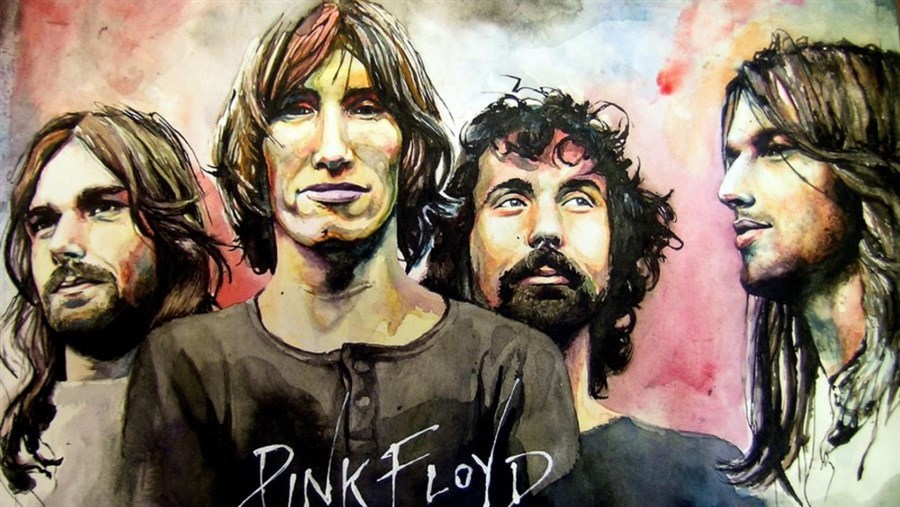
It fared slightly better than "Arnold Layne", peaking at number 6 in the UK. The band performed on the BBC's Look of the Week, where Roger Waters and Syd Barrett, erudite and engaging, faced tough questioning from Hans Keller. They appeared on the BBC's Top of the Pops, a popular programme that controversially required artists to mime their singing and playing. Though Pink Floyd returned for two more performances, by the third, Syd Barrett had begun to unravel, and around this time the band first noticed significant changes in his behaviour. By early 1967, he was regularly using LSD, and Nick Mason described him as "completely distanced from everything going on".
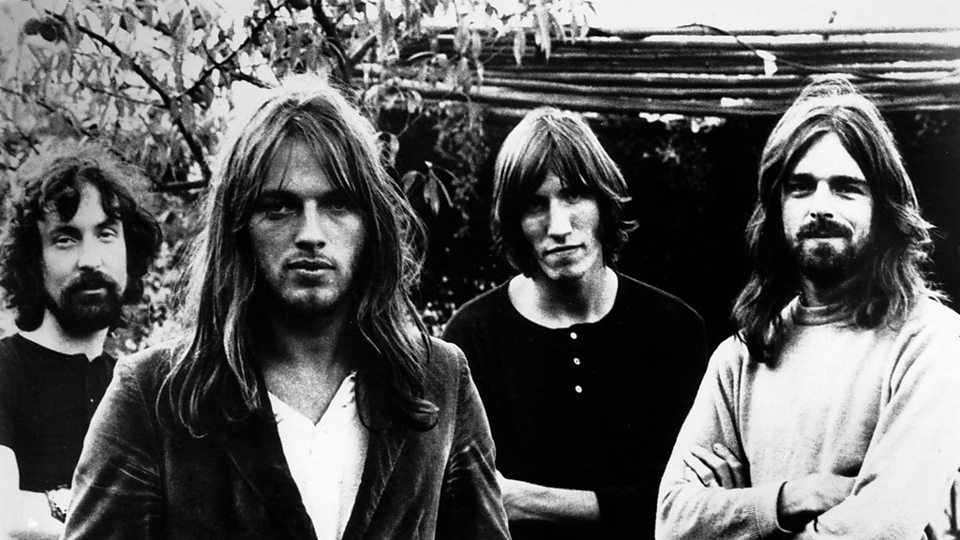
The Piper at the Gates of Dawn
Rryan Morrison and EMI producer Norman Smith negotiated Pink Floyd's first recording contract. As part of the deal, the band agreed to record their first album at EMI´s Abbey Road Studios in London. Nick Mason recalled that the sessions were trouble-free. Norman Smith disagreed, stating that Syd Barrett was unresponsive to his suggestions and constructive criticism. EMI-Columbia released The Piper at the Gates of Dawn in August 1967. The album peaked at number 6, spending 14 weeks on the UK charts.
One month later, it was released under the Tower Records label. Pink Floyd continued to draw large crowds at the UFO Club; however, Syd Barrett's mental breakdown was by then causing serious concern. The group initially hoped that his erratic behaviour would be a passing phase, but some were less optimistic, including Peter Jenner and his assistant, June Child, Marc Bolan's wife, who commented:
"I found [Syd Barrett] in the dressing room and he was so ... gone. Roger Waters and I got him on his feet, [and] we got him out to the stage ... The band started to play and Syd just stood there. He had his guitar around his neck and his arms just hanging down".
Forced to cancel Pink Floyd's appearance at the prestigious National Jazz and Blues Festival, as well as several other shows, Andrew King informed the music press that Syd Barrett was suffering from nervous exhaustion. Roger Waters arranged a meeting with psychiatrist R. D. Laing, and though Roger Waters personally drove Syd Barrett to the appointment, Syd refused to come out of the car. A stay in Formentera with Sam Hutt, a doctor well established in the underground music scene, led to no visible improvement. The band followed a few concert dates in Europe during September with their first tour of the US in October. As the US tour went on, Syd's condition grew steadily worse. During appearances on the Dick Clark and Pat Boone shows in November, Syd confounded his hosts by giving terse answers to questions (or not responding at all) and staring into space. He refused to move his lips when it came time to mime "See Emily Play" on Pat Boone's show. After these embarrassing episodes, Andrew King ended their US visit and immediately sent them home to London. Soon after their return, they supported Jimi Hendrix during a tour of England; however, Syd Barrett's depression worsened as the tour continued.
Transition and international success (1967-1978)
Replacement of Syd Barrett by David Gilmour (1967)
In December 1967, reaching a crisis point with Syd Barrett, Pink Floyd added guitarist David Gilmour as the fifth member. David already knew Syd, having studied with him at Cambridge Tech in the early 1960s. The two had performed at lunchtimes together with guitars and harmonicas, and later hitch-hiked and busked their way around the south of France. In 1965, while a member of Joker's Wild, David Gilmour had watched the Tea Set. Bryan Morrison's assistant, Steve O'Rourke, set David up in a room at Steve's house with a salary of £30 per week (equivalent to £500 in 2020).
In January 1968, Blackhill Enterprises announced David Gilmour as the band's newest member, intending to continue with Syd Barrett as a nonperforming songwriter. According to Pete Jenner, the group planned that Gilmour would "cover for Syd Barrett's eccentricities". When this proved unworkable, it was decided that Syd would just write material. In an expression of his frustration, Syd, who was expected to write additional hit singles to follow up "Arnold Layne" and "See Emily Play",
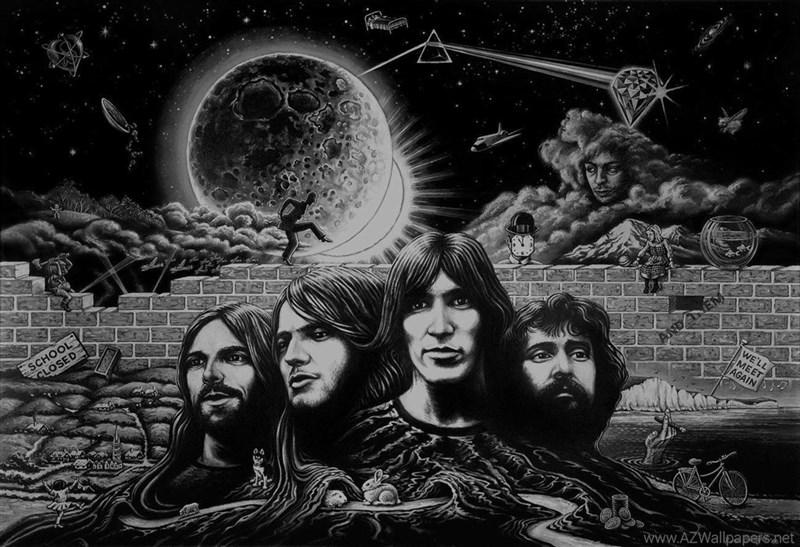
instead introduced "Have You Got It Yet?" to the band, intentionally changing the structure on each performance so as to make the song impossible to follow and learn. In a January 1968 photoshoot of Pink Floyd, the photographs show Syd Barrett looking detached from the others, staring into the distance.
Working with Syd Barrett eventually proved too difficult, and matters came to a conclusion in January while en route to a performance in Southampton when a band member asked if they should collect Syd. According to David Gilmour, the answer was "Nah, let's not bother", signalling the end of Syd's tenure with Pink Floyd. Roger Waters later said, "He was our friend, but most of the time we wanted to strangle him." In early March 1968, Pink Floyd met with business partners Pete Jenner and Andrew King to discuss the band's future; Syd Barrett agreed to leave.
Pete Jenner and Andrew King believed Syd Barrett was the creative genius of the band, and decided to represent him and end their relationship with Pink Floyd. Bryan Morrison sold his business to Brian Epstein's NEMS Enterprises, and Steve O'Rourke became the band's personal manager. Blackhill announced Syd Barrett's departure on 6 April 1968. After Syd's departure, the burden of lyrical composition and creative direction fell mostly on Roger Waters. Initially, David Gilmour mimed to Syd Barrett's voice on the group's European TV appearances; however, while playing on the university circuit, they avoided Barrett songs in favour of Roger Waters and Richard Wright material such as "It Would Be So Nice" and "Careful with That Axe, Eugene".
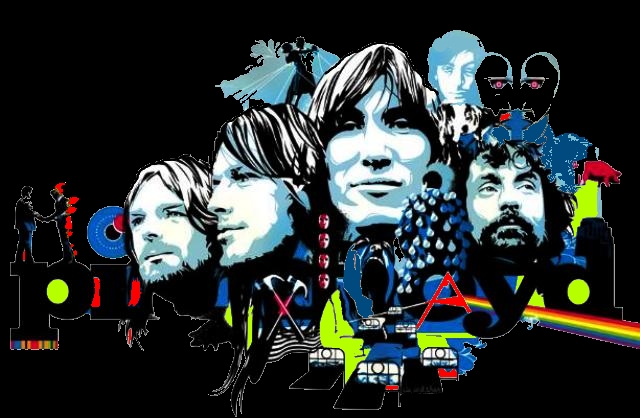
A Saucerful of Secrets (1968)
In 1968, Pink Floyd returned to Abbey Road Studios to record their second album, A Saucerful of Secrets. The album included Syd Barrett's final contribution to their discography, "Jugband Blues". Roger Waters began to develop his own songwriting, contributing "Set the Controls for the Heart of the Sun", "Let There Be More Light" and "Corporal Clegg". Richard Wright composed "See-Saw" and "Remember a Day". Norman Smith encouraged them to self-produce their music, and they recorded demos of new material at their houses. With Norman Smith's instruction at Abbey Road, they learned how to use the recording studio to realise their artistic vision.
However, Norman Smith remained unconvinced by their music, and when Nick Mason struggled to perform his drum part on "Remember a Day", Norman Smith stepped in as his replacement. Richard Wright recalled Norman Smith's attitude about the sessions, "Norman gave up on the second album ... he was forever saying things like, 'You can't do twenty minutes of this ridiculous noise".
As neither Roger Waters nor Nick Mason could read music, to illustrate the structure of the album's title track, they invented their own system of notation. David Gilmour later described their method as looking "like an architectural diagram".
Released in June 1968, the album featured a psychedelic cover designed by Storm Thorgerson and Aubrey Powell of Hipgnosis. The first of several Pink Floyd album covers designed by Hipgnosis, it was the second time that EMI permitted one of their groups to contract designers for an album jacket. The release peaked at number 9, spending 11 weeks on the UK chart. Record Mirror gave the album an overall favourable review, but urged listeners to "forget it as background music to a party". John Peel described a live performance of the title track as "like a religious experience", while NME described the song as "long and boring ... [with] little to warrant its monotonous direction". On the day after the album's UK release, Pink Floyd performed at the first ever free concert in Hyde Park. In July 1968, they returned to the US for a second visit. Accompanied by the Soft Machine and the Who, it marked Pink Floyd's first significant tour. In December of that year, they released "Point Me at the Sky"; no more successful than the two singles they had released since "See Emily Play", it would be the band's last until their 1973 release (in limited territories, not including the UK), "Money".
Ummagumma (1969), Atom Heart Mother (1970), and Meddle (1971)
Ummagumma represented a departure from Pink Floyd's previous work. Released as a double-LP on EMI's Harvest label, the first two sides contained live performances recorded at Manchester College of Commerce and Mothers, a club in Birmingham. The second LP contained a single experimental contribution from each band member. Ummagumma was released in November 1969 and received positive reviews.
The album peaked at number 5, spending 21 weeks on the UK chart. In October 1970, Pink Floyd released Atom Heart Mother. An early version premièred in England in mid January, but disagreements over the mix prompted the hiring of Ron Geesin to work out the sound problems. Ron worked to improve the score, but with little creative input from the band, production was troublesome. Ron Geesin eventually completed the project with the aid of John Alldis, who was the director of the choir hired to perform on the record.

Smith earned an executive producer credit, and the album marked his final official contribution to the band's discography. David Gilmour said it was "A neat way of saying that he didn't ... do anything". Roger Waters was critical of Atom Heart Mother, claiming that he would prefer if it were "thrown into the dustbin and never listened to by anyone ever again". David Gilmour once described it as "a load of rubbish", stating: "I think we were scraping the barrel a bit at that period." Pink Floyd's first number- one album, Atom Heart Mother was hugely successful in Britain, spending 18 weeks on the UK chart. It premièred at the Bath Festival on 27 June 1970.
Pink Floyd toured extensively across America and Europe in 1970. In 1971, Pink Floyd took second place in a reader's poll, in Melody Maker, and for the first time were making a profit. Nick Mason and Richard Wright became fathers and bought homes in London while David Gilmour, still single, moved to a 19th-century farm in Essex. Roger Waters installed a home recording studio at his house in Islington in a converted toolshed at the back of his garden. In January 1971, upon their return from touring Atom Heart Mother, Pink Floyd began working on new material. Lacking a central theme, they attempted several unproductive experiments; engineer John Leckie described the sessions as often beginning in the afternoon and ending early the next morning, "during which time nothing would get [accomplished]. There was no record company contact whatsoever, except when their label manager would show up now and again with a couple of bottles of wine and a couple of joints". The band spent long periods working on basic sounds, or a guitar riff. They also spent several days at Air Studios, attempting to create music using a variety of household objects, a project which would be revisited between The Dark Side of the Moon and Wish You Were Here.
Released in October 1971, "Meddle not only confirms lead guitarist David Gilmour's emergence as a real shaping force with the group, it states forcefully and accurately that the group is well into the growth track again", wrote Jean-Charles Costa of Rolling Stone. NME called Meddle "an exceptionally good album", singling out "Echoes" as the "Zenith which the Floyd have been striving for". However, Melody Maker's Michael Watts found it underwhelming, calling the album "a soundtrack to a non-existent movie", and shrugging off Pink Floyd as "so much sound and fury, signifying nothing". Meddle is a transitional album between the Barrett-influenced group of the late 1960s and the emerging Pink Floyd. The LP peaked at number 3, spending 82 weeks on the UK Albums chart.
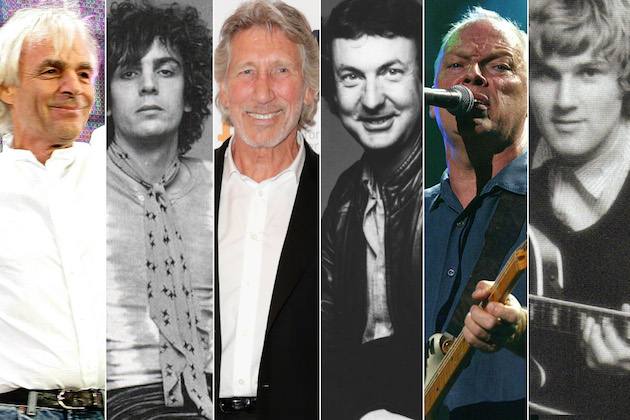
The Dark Side of the Moon (1973)
Pink Floyd recorded The Dark Side of the Moon between May 1972 and January 1973 with EMI staff engineer Alan Parsons at Abbey Road. The title is an allusion to lunacy rather than astronomy. The band had composed and refined the material while touring the UK, Japan, North America and Europe. Producer Chris Thomas assisted Alan Parsons. Hipgnosis designed the packaging, which included George Hardie's iconic refracting prism design on the cover.
Storm Thorgerson's cover features a beam of white light, representing unity, passing through a prism, which represents society. The refracted beam of coloured light symbolises unity diffracted, leaving an absence of unity. Roger Waters is the sole author of the lyrics. Released in March 1973, the LP became an instant chart success in the UK and throughout Western Europe, earning an enthusiastic response from critics. Each member of Pink Floyd except Richard Wright boycotted the press release of The Dark Side of the Moon because a quadraphonic mix had not yet been completed, and they felt presenting the album through a poor-quality stereo PA system was insufficient.
Melody Maker's Roy Hollingworth described side one as "utterly confused ... [and] difficult to follow", but praised side two, writing: "The songs, the sounds ... [and] the rhythms were solid ... [the] saxophone hit the air, the band rocked and rolled". Rolling Stone's Loyd Grossman described it as "a fine album with a textural and conceptual richness that not only invites, but demands involvement."
Throughout March 1973, The Dark Side of the Moon featured as part of Pink Floyd's US tour. The album is one of the most commercially successful rock albums of all time; a US number-one, it remained on the Billboard Top LPs & Tape chart for more than fourteen years during the 1970s and 1980s, selling more than 45 million copies worldwide. In Britain, the album peaked at number 2, spending 364 weeks on the UK chart. The Dark Side of the Moon is the world's third best-selling album, and the twenty-first best-selling album of all time in the US. The success of the album brought enormous wealth to the members of Pink Floyd. Roger Waters and Richard Wright bought large country houses while Nick Mason became a collector of expensive cars. Disenchanted with their US record company, Capitol Records, Pink Floyd and Steve O'Rourke negotiated a new contract with Columbia Records, who gave them a reported advance of $1,000,000 (US$5,247,638 in 2020 dollars). In Europe, they continued to be represented by Harvest Records.
Wish You Were Here (1975)
After a tour of the UK performing Dark Side, Pink Floyd returned to the studio in January 1975 and began work on their ninth studio album, Wish You Were Here. Alan Parsons declined an offer to continue working with them, becoming successful in his own right with the Alan Parsons Project, and so the band turned to Brian Humphries. Initially, they found it difficult to compose new material; the success of The Dark Side of the Moon had left Pink Floyd physically and emotionally drained. Richard Wright later described these early sessions as "falling within a difficult period" and Roger Waters found them "tortuous".
David Gilmour was more interested in improving the band's existing material. Nick Mason's failing marriage left him in a general malaise and with a sense of apathy, both of which interfered with his drumming. Despite the lack of creative direction, Roger Waters began to visualise a new concept after several weeks. During 1974, Pink Floyd had sketched out three original compositions and had performed them at a series of concerts in Europe. These compositions became the starting point for a new album whose opening four-note guitar phrase,

composed purely by chance by David Gilmour, reminded Roger Waters of Syd Barrett. The songs provided a fitting summary of the rise and fall of their former bandmate. Roger Waters commented: "Because I wanted to get as close as possible to what I felt ... [that] indefinable, inevitable melancholy about the disappearance of Syd."
While Pink Floyd were working on the album, Syd Barrett made an impromptu visit to the studio. Thorgerson recalled that he "sat round and talked for a bit, but he wasn't really there". He had changed significantly in appearance, so much so that the band did not initially recognise him. Roger Waters was reportedly deeply upset by the experience. Most of Wish You Were Here premiered on 5 July 1975, at an open-air music festival at Knebworth House. Released in September, it reached number one in both the UK and the US.
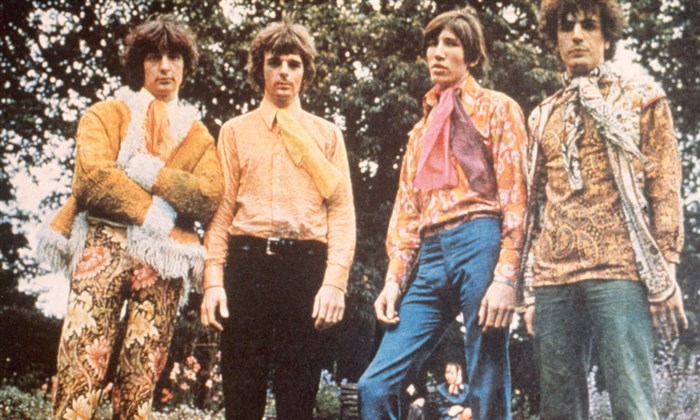
Animals (1977)
In 1975, Pink Floyd bought a three-storey group of church halls at 35 Britannia Row in Islington and began converting them into a recording studio and storage space. In 1976, they recorded their tenth album, Animals, in their newly finished 24-track studio. The album concept originated with Roger Waters, loosely based on George Orwell's political fable Animal Farm. The lyrics describe different classes of society as dogs, pigs, and sheep.
Hipgnosis received credit for the packaging; however, Roger Waters designed the final concept, choosing an image of the ageing Battersea Power Station, over which they superimposed an image of a pig. The division of royalties was a source of conflict between band members, who earned royalties on a per-song basis. Although David Gilmour was largely responsible for "Dogs", which took up almost the entire first side of the album, he received less than Roger Waters, who contributed the much shorter two-part "Pigs on the Wing". Richard Wright commented:
"It was partly my fault because I didn't push my material ... but Dave did have something to offer, and only managed to get a couple of things on there." Nick Mason recalled: "Roger was in full flow with the ideas, but he was really keeping Dave down, and frustrating him deliberately." David Gilmour, distracted by the birth of his first child, contributed little else toward the album. Similarly, neither Nick Mason nor Richard Wright contributed much toward Animals; Richard Wright had marital problems, and his relationship with Roger Waters was also suffering. Animals was the first Pink Floyd album with no writing credit for Richard Wright, who said: "This was when Roger really started to believe that he was the sole writer for the band ... that it was only because of him that [we] were still going ... when he started to develop his ego trips, the person he would have his conflicts with would be me."
Released in January 1977, Animals peaked on the UK chart at number two, and the US chart at number three. NME described the album as "one of the most extreme, relentless, harrowing and downright iconoclastic hunks of music", and Melody Maker's Karl Dallas called it "[an] uncomfortable taste of reality in a medium that has become in recent years, increasingly soporific".
Pink Floyd performed much of Animals during their "In the Flesh" tour. It was their first experience playing large stadiums, whose size caused unease in the band. Roger Waters began arriving at each venue alone, departing immediately after the performance. On one occasion, Richard Wright flew back to England, threatening to quit. At the Montreal Olympic Stadium, a group of noisy and enthusiastic fans in the front row of the audience irritated Roger Waters so much that he spat at one of them. The end of the tour marked a low point for David Gilmour, who felt that the band achieved the success they had sought, with nothing left for them to accomplish.
Roger Waters-led era (1978-1985) The Wall (1979)
In July 1978, amid a financial crisis caused by negligent investments, Roger Waters presented two ideas for Pink Floyd's next album. The first was a 90-minute demo with the working title Bricks in the Wall; the other later became Roger Waters' first solo album, The Pros and Cons of Hitch Hiking. Although both Nick Mason and David Gilmour were initially cautious, they chose the former. Bob Ezrin co-produced and wrote a forty-page script for the new album.
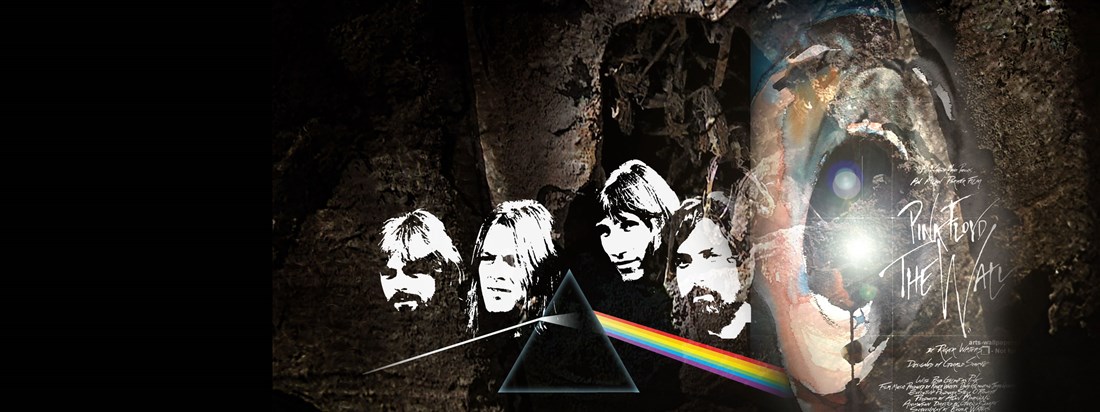
Bob Ezrin based the story on the central figure of Pink-a gestalt character inspired by Roger Waters' childhood experiences, the most notable of which was the death of his father in World War II. This first metaphorical brick led to more problems; Pink would become drug-addled and depressed by the music industry, eventually transforming into a megalomaniac, a development inspired partly by the decline of Syd Barrett. At the end of the album, the increasingly fascist audience would watch as Pink tore down the wall, once again becoming a regular and caring person.
During the recording of The Wall, the band became dissatisfied with Richard Wright's lack of contribution and fired him. David Gilmour said that Richard was dismissed as he "hadn't contributed anything of any value whatsoever to the album-he did very, very little". According to Nick Mason, Richard Wright would sit in on the sessions "without doing anything, just 'being a producer'." Roger Waters said the band agreed that Wright would either have to "have a long battle" or agree to "leave quietly" after the album was finished; Richard Wright accepted the ultimatum and left.
The Wall was supported by Pink Floyd's first single since "Money", "Another Brick in the Wall (Part II)", which topped the charts in the US and the UK. The Wall was released on 30 November 1979 and topped the Billboard chart in the US for 15 weeks, reaching number three in the UK. It is tied for sixth most certified album by RIAA, with 23 million certified units sold in the US. The cover, with a stark brick wall and band name, was the first Pink Floyd album cover since The Piper at the Gates of Dawn not designed by Hipgnosis.
Gerald Scarfe produced a series of animations for The Wall tour. He also commissioned the construction of large inflatable puppets representing characters from the storyline, including the "Mother", the "Ex-wife" and the "Schoolmaster". Pink Floyd used the puppets during their performances. Relationships within the band reached an all-time low; their four Winnebagos parked in a circle, the doors facing away from the centre. Roger Waters used his own vehicle to arrive at the venue and stayed in different hotels from the rest of the band. Richard Wright returned as a paid musician, making him the only band member to profit from the tour, which lost about $600,000 (US$1,707,980 in 2020 dollars).
The Wall was adapted into a film, Pink Floyd – The Wall. The film was conceived as a combination of live concert footage and animated scenes; however, the concert footage proved impractical to film. Alan Parker agreed to direct and took a different approach. The animated sequences remained, but scenes were acted by actors with no dialogue. Roger Waters was screentested, but quickly discarded and they asked Bob Geldof to accept the role of Pink. Bob Geldof was initially dismissive, condemning The Wall's storyline as "bollocks". Eventually won over by the prospect of participation in a significant film and receiving a large payment for his work, Bob Geldof agreed. Screened at the Cannes Film Festival in May 1982, Pink Floyd – The Wall premièred in the UK in July 1982.
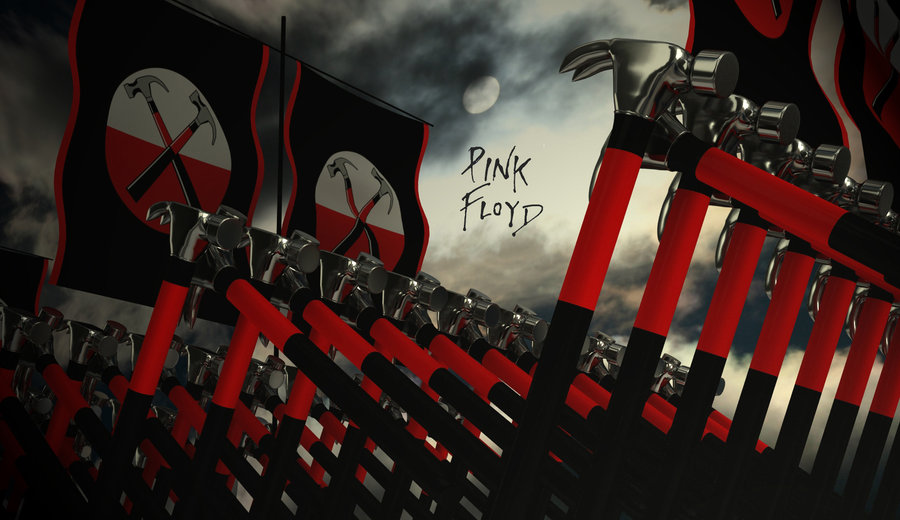
The Final Cut (1983)
In 1982, Waters suggested a project with the working title Spare Bricks, originally conceived as the soundtrack album for Pink Floyd – The Wall. With the onset of the Falklands War, Roger Waters changed direction and began writing new material. He saw Margaret Thatcher's response to the invasion of the Falklands as jingoistic and unnecessary, and dedicated the album to his late father.
Immediately arguments arose between Roger Waters and David Gilmour, who felt that the album should include all new material, rather than recycle songs passed over for The Wall. Roger felt that David had contributed little to the band's lyrical repertoire. Michael Kamen, a contributor to the orchestral arrangements of The Wall, mediated between the two, also performing the role traditionally occupied by the then-absent Richard Wright. The tension within the band grew.
Roger Waters and David Gilmour worked independently; however, David began to feel the strain, sometimes barely maintaining his composure. After a final confrontation, David Gilmour's name disappeared from the credit list, reflecting what Roger Waters felt was his lack of songwriting contributions.
Though Nick Mason's musical contributions were minimal, he stayed busy recording sound effects for an experimental Holophonic system to be used on the album. With marital problems of his own, he remained a distant figure. Pink Floyd did not use Storm Thorgerson for the cover design, Roger Waters choosing to design the cover himself. Released in March 1983, The Final Cut went straight to number one in the UK and number six in the US. Roger Waters wrote all the lyrics, as well as all the music on the album. David Gilmour did not have any material ready for the album and asked Roger Waters to delay the recording until he could write some songs, but Roger refused. David later commented: "I'm certainly guilty at times of being lazy ... but he wasn't right about wanting to put some duff tracks on The Final Cut." Rolling Stone magazine gave the album five stars, with Kurt Loder calling it "a superlative achievement ... art rock's crowning masterpiece". Kurt Loder viewed The Final Cut as "essentially a Roger Waters solo album".
Roger Waters' departure and legal battles
David Gilmour recorded his second solo album, About Face, in 1984, and used it to express his feelings about a variety of topics, from the murder of John Lennon to his relationship with Roger Waters. He later stated that he used the album to distance himself from Pink Floyd. Soon afterwards, Roger Waters began touring his first solo album, The Pros and Cons of Hitch Hiking (1984). Richard Wright formed Zee with Dave Harris and recorded Identity, which went almost unnoticed upon its release.
Nick Mason released his second solo album, Profiles, in August 1985. David Gilmour, NickMason, Roger Waters and Steve O'Rourke met for dinner in 1984 to discuss their future. Nick Mason and David Gilmour left the restaurant thinking that Pink Floyd could continue after Roger Waters had finished The Pros and Cons of Hitch Hiking, noting that they had had several hiatuses before; however, Roger Waters left believing that Nick Mason and David Gilmour had accepted that Pink Floyd were finished. Nick Mason said that Roger Waters later saw the meeting as "duplicity rather than diplomacy", and wrote in his memoir:

Clearly, our communication skills were still troublingly nonexistent. We left the restaurant with diametrically opposed views of what had been decided."
Following the release of The Pros and Cons of Hitch Hiking, Roger Waters publicly insisted that Pink Floyd would not reunite. He contacted Steve O'Rourke to discuss settling future royalty payments. Steve felt obliged to inform Nick and David, which angered Roger, who wanted to dismiss him as the band's manager. He terminated his management contract with Steve O'Rourke and employed Peter Rudge to manage his affairs. Roger Waters wrote to EMI and Columbia announcing he had left the band, and asked them to release him from his contractual obligations. David Gilmour believed that Roger Waters left to hasten the demise of Pink Floyd. Roger Waters later stated that, by not making new albums, Pink Floyd would be in breach of contract, which would suggest that royalty payments would be suspended, and that the other band members had forced him from the group by threatening to sue him. He went to the High Court in an effort to dissolve the band and prevent the use of the Pink Floyd name, declaring Pink Floyd "a spent force creatively".
When Roger Waters' lawyers discovered that the partnership had never been formally confirmed, he returned to the High Court in an attempt to obtain a veto over further use of the band's name. David Gilmour responded with a press release affirming that Pink Floyd would continue to exist. The sides reached an out-of-court agreement, finalised on David Gilmour's houseboat the Astoria on Christmas Eve 1987. In 2013, Roger Waters said he regretted the lawsuit and had failed to appreciate that the Pink Floyd name had commercial value independent of the band members.

